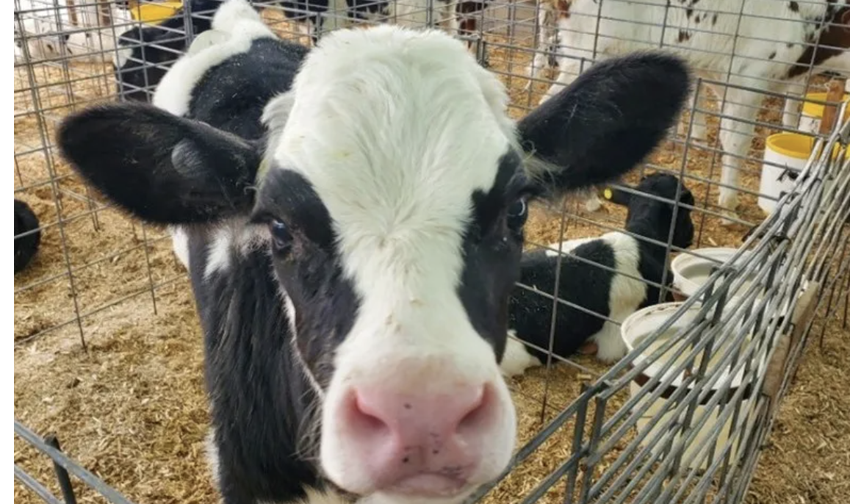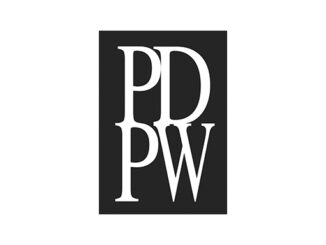
Study suggests including 10-15% alfalfa hay in pre-weaning calf diets positively impacts health, rumen development, and milk production in the first lactation.
Feeding forage to pre-weaned calves has been a topic of discussion for many years, with arguments both for and against. Research has shown that providing forage with starter – compared to starter only – can increase starter intake and average daily gain and decrease unwanted behaviors, such as tongue rolling and pen-directed sucking [1, 2]. However, concerns arise when forage supplementation exceeds 10-15% of total dry matter (DM) intake because this may limit starter intake [3].
In a recent article published in the Journal of Dairy Science, Zhang et al. (2024) explored “what happens” when calves are fed different types of forage during the pre-weaning period [4]. The researchers were also interested to see if any effects persisted into the first lactation.
To address these questions, 60 female Holstein calves were assigned to 1 of 3 dietary treatment groups at 30 days of age:
- Milk + pelleted starter only
- Milk + pelleted starter + oat hay (9.3% crude protein, 53.3% neutral detergent fiber, DM basis)
- Milk + pelleted starter + alfalfa hay (16.8% crude protein, 36.1% neutral detergent fiber, DM basis)
Oat and alfalfa hay were supplemented from 30 to 73 days of age, and calves were fed pasteurized whole milk (according to the schedule in Table 1). After weaning, housing and husbandry practices were the same for all calves.
| Age (d) | Milk (L/d) | Hay (lb/d) |
|---|---|---|
| 2 to 14 | 8 | — |
| 15 to 29 | 10 | — |
| 30 to 59 | 12 | 0.2 |
| 60 to 66 | 8 | 0.2 |
| 67 to 73 | 4 | 0.2 |
The researchers found that calves supplemented with alfalfa hay consumed more forage than calves supplemented with oat hay. However, greater total DM intake was observed in calves that were provided oat hay. Growth was similar across the different dietary treatment groups. The researchers noted that the minor differences in nutrient composition between diets might not have been enough to affect growth, given the low forage inclusion rate of 10-15% of average starter intake.
Alfalfa hay supplementation improved fecal consistency in calves compared with those that received starter only. The researchers also analyzed rumen fluid samples – collected using a flexible esophageal tube – to understand how the different diets impacted rumen fermentation characteristics. Both forage groups had lower total volatile fatty acids, which supports the growth of rumen papillae. Importantly though, forage supplementation increased rumen pH, which can help reduce calves’ risk of acidosis caused by high starch levels in starter.
Interestingly, average daily milk production during first lactation was greater in the alfalfa hay-supplemented calves, and this group also tended to be younger at first breeding compared with oat hay-supplemented calves and those that did not receive any forage. Both findings are economically meaningful for dairy operations.
So, what happens when calves are fed different types of forage during the pre-weaning period? According to Zhang et al. (2024), it depends on the type. Calf diets supplemented with alfalfa hay yielded the greatest benefits in both the short- and long-term.
Making the decision to incorporate forage in pre-weaning calf diets can be complex and farm-specific. This study showed that the type of forage matters, but other factors like the amount and quality of the forage, as well as the physical form of starter and milk volume, also need to be considered [3]. Therefore, it is important to review your nutritional program as a whole before incorporating forage into your calf diets.
Resources
[1] Castells, L, A. Bach, G. Araujo, C. Montoro, and M. Terré. 2012. Effect of different forage sources on performance and feeding behavior of Holstein calves.Journal of Dairy Science 95(1): 286-293. doi: 10.3168/jds.2011-4405.
[2] Pazoki, A., G. R. Ghorbani, S. Kargar, A. Sadeghi-Sefidmazgi, J. K. Drackley, and M. H. Ghaffari. 2017. Growth performance, nutrient digestibility, ruminal fermentation, and rumen development of calves during transition from liquid to solid feed: Effects of physical form of starter feed and forage provision. Animal Feed Science and Technology 234: 173-185. doi: 10.1016/j.anifeedsci.2017.06.004.
[3] Imani, M., M. Mirzaei, B. Baghbanzadeh-Nobari, and M. H. Ghaffari. 2017. Effects of forage provision to dairy calves on growth performance and rumen fermentation: A meta-analysis and meta-regression. Journal of Dairy Science 100(2): 1136-1150. doi: 10.3168/jds.2016-11561.
[4] Zhang, J., C. Zhang, X. Yang, L. Li, Y. Cao, X. Zhang, Shuai Zhou et al. 2024. Short-and long-term effects of different forage types supplemented in preweaning dairy calves on performance and milk production into first lactation. Journal of Dairy Science 107(9): 7405-7422. doi: 10.3168/jds.2023-24244.





Be the first to comment